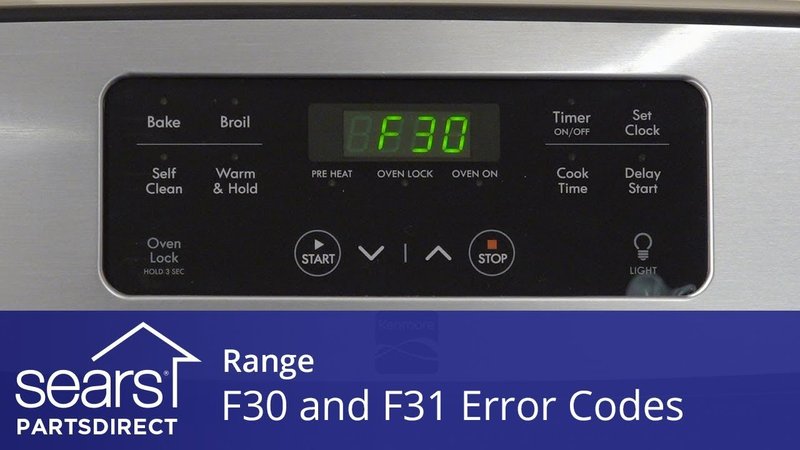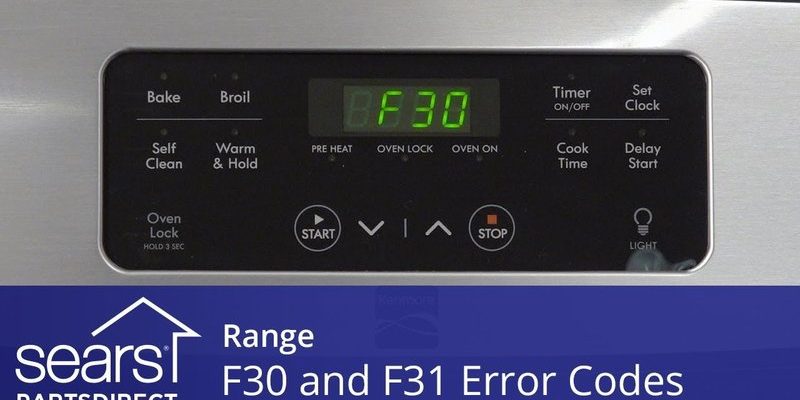
What Is Frigidaire Error Code LE?
Error codes in appliances like ovens are akin to warning lights in your car. When you see the “Error Code LE” on your Frigidaire oven, it essentially signifies a potential *lock or latch error*. This could mean several things, but primarily, it involves an issue with the door latch or lock motor. It’s like when your car’s door won’t fully close; it might be slightly ajar, causing a sensor to alert you. With ovens, this code ensures that the door is securely locked or the latch motor is functioning properly, particularly important for the self-cleaning feature.
Here’s the deal: if your oven can’t lock securely, it can’t perform some operations safely, particularly ones that involve high temperatures. This is mainly to protect you and your household from any accidental burns or fires. So, when you see this code, it’s not just a minor inconvenience but a safety feature that requires attention. This is why kneading through the potential causes behind it is crucial to understanding how to proceed.
You might be wondering, “Can I fix this myself?” In some instances, minor adjustments can indeed resolve the issue, such as ensuring the door is properly closed. Dust, grime, or food particles might cause the latch to misread the door status. However, more often than not, a persistent error means there’s a more significant issue at play, such as a faulty latch motor or a wiring problem, necessitating professional intervention.
Common Causes of the Error Code LE
So, what typically causes this error? The error code LE often surfaces when there’s an underlying problem with the locking mechanism. One common cause is a malfunctioning or obstructed door latch. Imagine if you tried closing a door, but there was a rock in the way — it just wouldn’t shut properly. Similarly, if food debris or leftover grease accumulates around the oven door latch, it might not function correctly, leading to this error.
Another potential culprit could be a faulty or worn-out latch motor. This motor is responsible for engaging and disengaging the lock, especially during the oven’s self-cleaning cycle when the door must remain securely closed. If this motor starts failing over time, the door might not lock or unlock as expected, triggering the error code. Additionally, wiring or electronic control board issues could also be to blame. These components are like the brain and nervous system of your oven, coordinating various functions. A disruption here can easily cause your oven to display this error.
So, how do you determine the exact cause? Observing when the error appears—whether during regular baking, cleaning, or when you attempt to lock the door—can provide clues. However, while cleaning the latch area might be worth a try, deeper issues like a malfunctioning motor or electronic failures are best diagnosed by a technician.
Implications and Next Steps
Seeing the error code LE flash on your oven can be frustrating, especially when you’ve got a family dinner to prepare. But understanding the implications can help guide your next steps. This error impacts your oven’s ability to lock securely, which can hinder specific functions like self-cleaning. This isn’t just about convenience; it’s also a matter of safety, ensuring your oven operates without risks of accidental exposure to high temperatures.
If the error persists despite basic troubleshooting like inspecting and cleaning around the latch area, it’s wise to call a professional technician. A trained expert can efficiently diagnose the problem, whether it involves replacing the latch motor or addressing more complex wiring issues. This ensures that your oven is back in working order safely and efficiently without you needing to worry about potential mishaps.
While you’re waiting for the technician, there are preventive steps you can consider for the future. Regular cleaning around the door latch area can prevent debris buildup, reducing the risk of a repeat error. Also, familiarize yourself with the user manual for specific maintenance tips relevant to your model. This proactive approach helps keep your appliance in tip-top shape, ensuring fewer surprises down the road.
When to Call a Technician
You might be asking, “When exactly should I call a technician?” The answer is straightforward: if basic troubleshooting doesn’t resolve the error or if you’re unsure about handling mechanical parts, it’s time to pick up the phone. It’s a bit like when your car is making a strange noise that doesn’t go away—you wouldn’t ignore it or try to fix it without knowing exactly what you’re doing, right? Your oven is no different; trusting a professional ensures the issue is resolved correctly and safely.
Professional technicians have the necessary tools and expertise to test components like the door latch motor, handle wiring issues, and reset the electronic control board if needed. This isn’t just about fixing the error code; it’s about peace of mind knowing your oven will function safely and reliably. They can also offer insights into other potential wear-and-tear issues you might not notice, keeping your appliance from suffering further problems.
In conclusion, while the error code LE may seem intimidating at first, understanding its meaning and knowing when to seek help makes the process much less stressful. By combining some simple preventative steps with professional help when needed, you can ensure that your Frigidaire oven or range continues to be a dependable partner in your culinary adventures.
